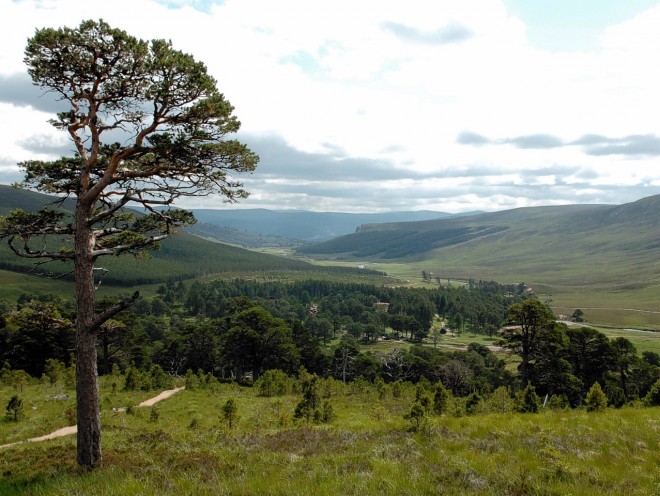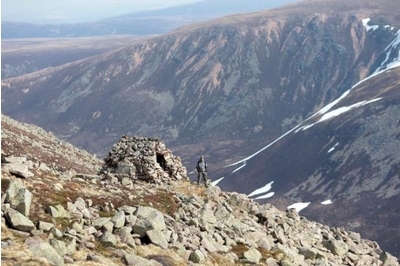At http://archaeologynewsnetwork.blogspot.co.uk/2015/07/human-presence-in-s… .. and at www.pressandjournal.co.uk/fp/news/aberdeenshire/632316/archaeologists-di…
 is a reference to the glens rather than the high mountains of the Cairngorms but the discovery was still significant as it shows that Mesolithic hunters and gatherers were accessing all points of northern Scotlandvery early in the Holocene – even shortly after glaciers on the mountains had receded. The Mar Lodge estate is near Braemar and the remains of Mesolithic people have been C14 dated as early as 8100BC – and probably infers they were there even earlier. This is an interesting date as the topography of Scotland greatly differed at that time than it does now with large areas now under water above sea level. The 'Upper Dee Tributary Project' involves the National Trust for Scotland as well as the universities of Aberdeen, Stirling, and Dublin, looking for evidence of Mesolithic people, primarily along the banks of rivers (the tributaries of the River Dee in the upland areas).
is a reference to the glens rather than the high mountains of the Cairngorms but the discovery was still significant as it shows that Mesolithic hunters and gatherers were accessing all points of northern Scotlandvery early in the Holocene – even shortly after glaciers on the mountains had receded. The Mar Lodge estate is near Braemar and the remains of Mesolithic people have been C14 dated as early as 8100BC – and probably infers they were there even earlier. This is an interesting date as the topography of Scotland greatly differed at that time than it does now with large areas now under water above sea level. The 'Upper Dee Tributary Project' involves the National Trust for Scotland as well as the universities of Aberdeen, Stirling, and Dublin, looking for evidence of Mesolithic people, primarily along the banks of rivers (the tributaries of the River Dee in the upland areas).
One C14 date from Glen Geldie came out at 6100BC which coincides with a period of excessive cold weather when glaciers are thought to have temporarily expanded in size. The image below is of the Cairngorm tops as they are now, in winter, but between 6200-6000BC it was much colder – yet people were not deterred it would seem.
 On the other hand, the 8100BC date comes from Glen Dee, a long mountain pass between Deeside and Speyside.
On the other hand, the 8100BC date comes from Glen Dee, a long mountain pass between Deeside and Speyside.
Meanwhile, at www.bbc.co.uk/news/uk-england-dorset-3349212 … a pre Roman town of 150 round houses has been uncovered by students from Bournemouth University – on a hill slope near Winterbourne Kingston. Quern stones for making bread flour, as well as weaving and other activities were taking place in and around the houses, an Iron Age village. This particular group of people were not living in a hill fort – so were those enigmatic hill top locations only used during emergencies (tribal warfare for instance).
At http://archaeologynewsnetwork.blogspot.co.uk/2015/07/archaeologists-unea… … where the gold in question comes in the form of spirals up to 3cm in length, a flat thread made of gold. Lots of pictures at the link and it is thought it came from the clothing of a priest, or from his headgear.
